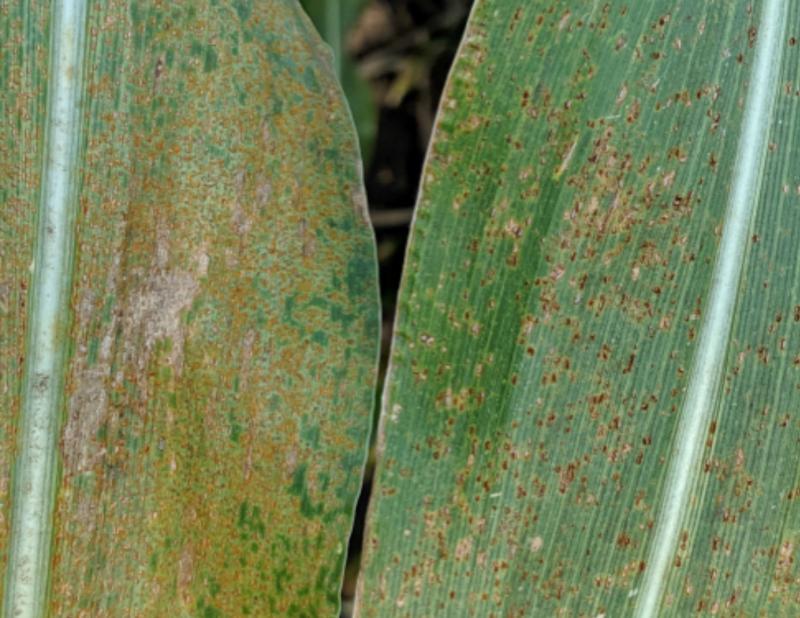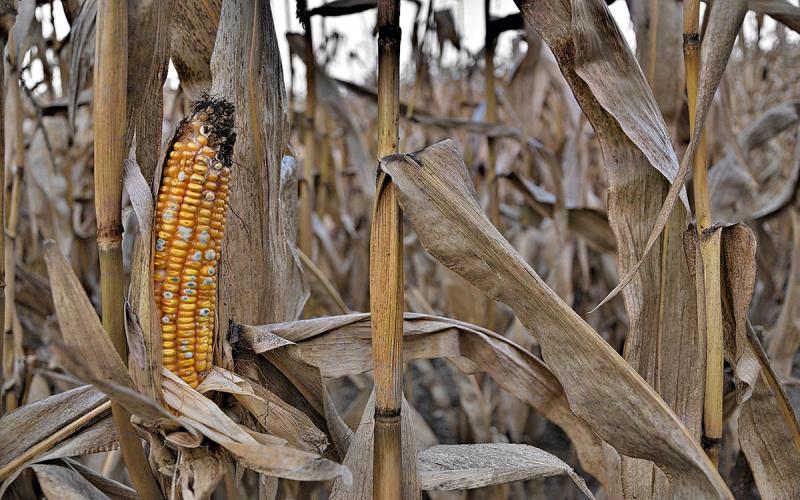
Written with contributions by Emmanuel Byamukama, former SDSU Extension Plant Pathologist.
Southern rust was found in a few corn fields scouted last week. This rust is developing very late in the season and therefore its impact on corn yield will be minimal. The corn growth stage that can be negatively impacted by this rust is before denting. Southern rust develops from spores blown from southern states and can quickly develop on corn leaves, reducing their photosynthetic leaf area (Figure 1).
Diagnosing Southern Rust

Southern rust should not be confused with common rust, which is as the name suggests, can be found in every corn field and as early as V3-V5. Southern rust, like any other rust, develops into pustules (raised fungal structures) on the leaves (Figure 2). Southern rust can be differentiated from common rust by the color and the arrangement of the pustules on the leaf. Common rust pustules are dark red in color, while southern rust pustules are orange brown (Figure 2). Southern rust pustules tend to be clustered on the corn leaf whereas common rust pustules may be scattered over the leaf.
Management
Southern rust is best managed through an application of a fungicide. For fungicides effective against southern rust, use this Corn Disease Management publication. Most corn hybrids are susceptible to southern rust and crop rotation does not work for rust diseases since rust spores can be travel long distances from other states.


